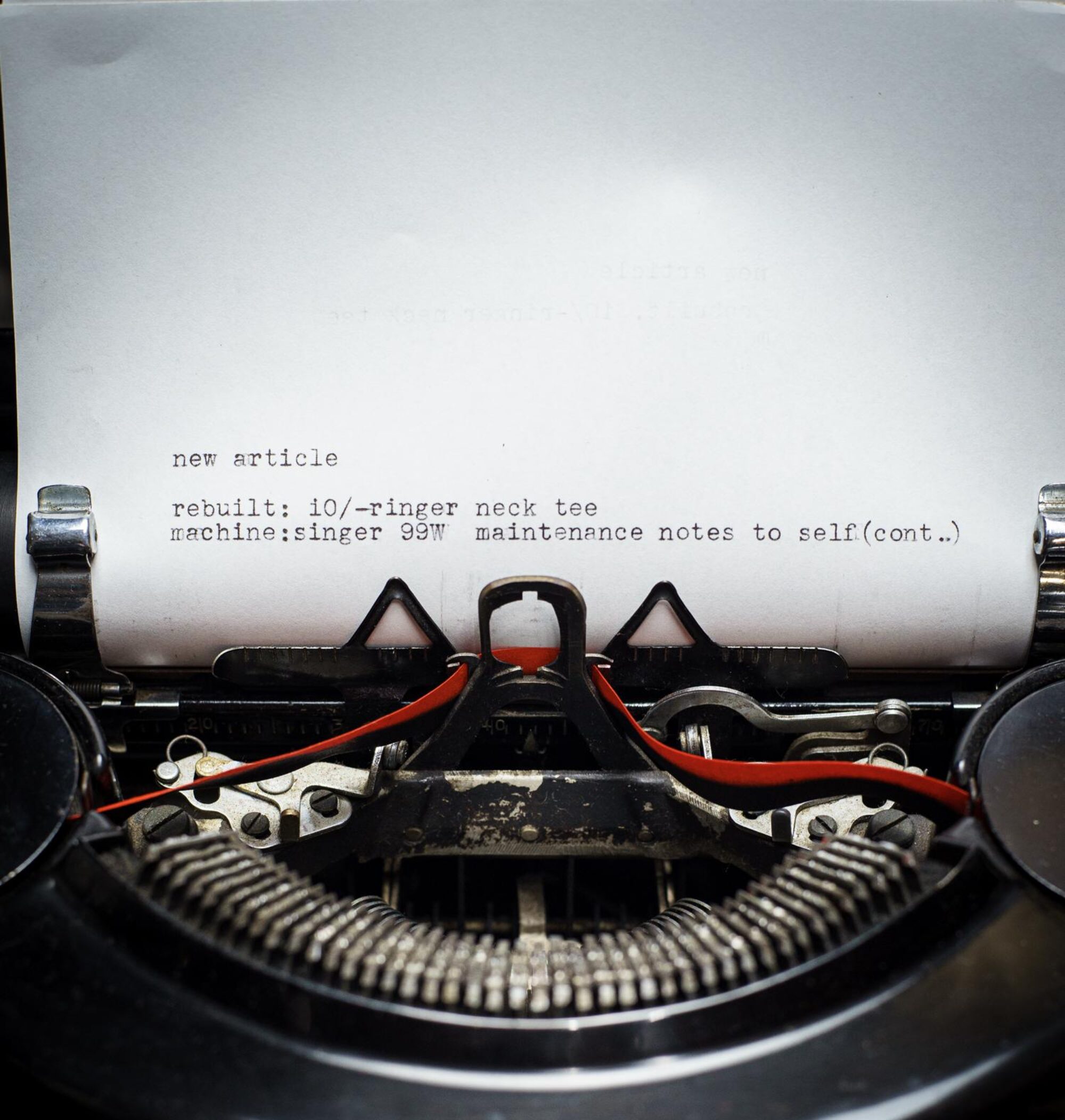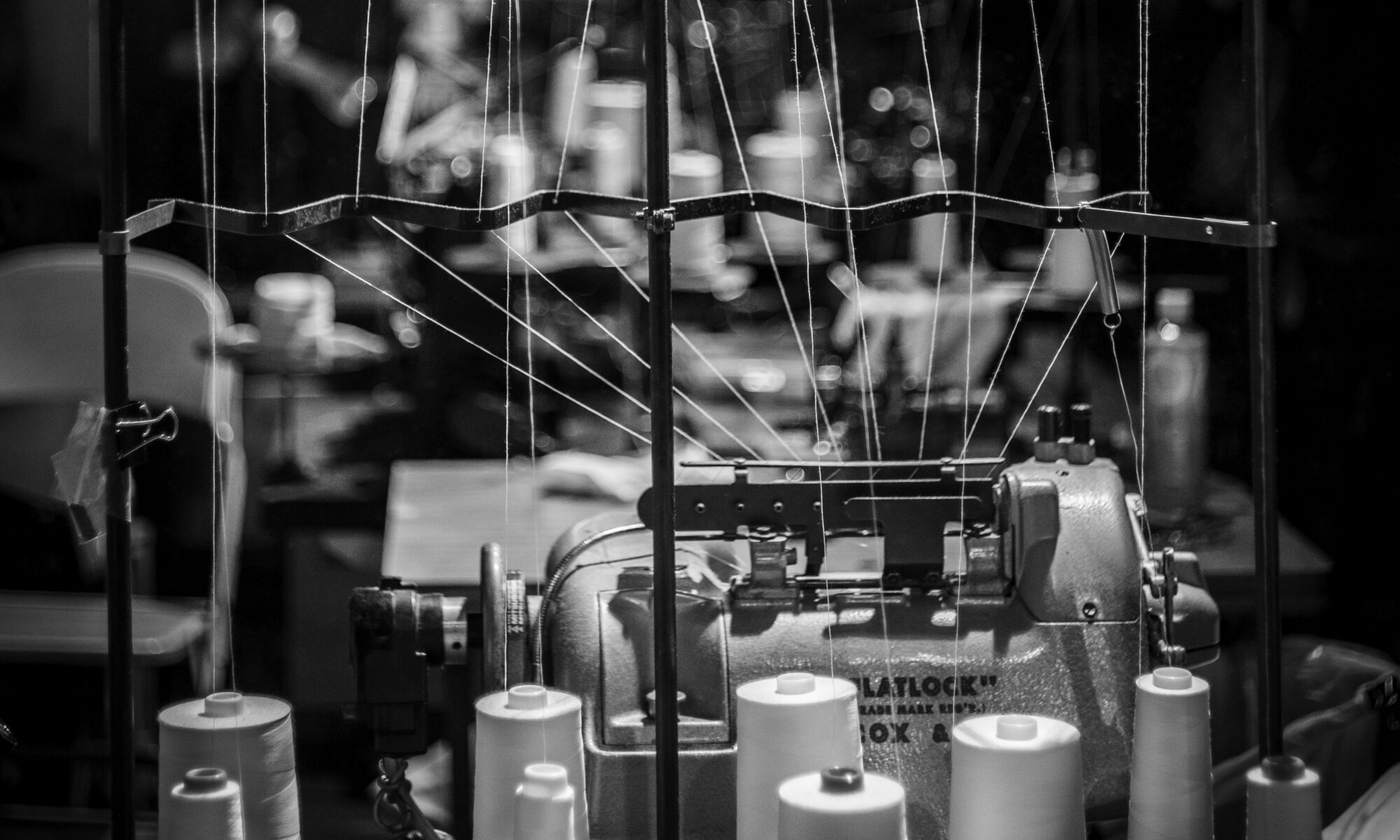
A Word of Introduction
¶ The merchant puts his name above his door, the officer wears the insignia of his rank, the ship flies the flag of its nation – each that he may be recognized and classified in his proper relation to his surroundings.
¶ This company has evolved an improvement used in the manufacture of Knit Underwear. It is the result of an invention that adds to the sum total of comfort and happiness of the world at large. It is an achievement in which we take a just pride.
¶ And, that he who buys may know where this source of comfort may be found, we have originated
“The Little Red Seal”
of which we set forth the story in this little book.
¶ It is our hope that the reader may gain something in the way of entertainment – and possibly instruction – from these pages, and that the merchant from whom you received this booklet may continue to enjoy not only your patronage, but your friendship as well.
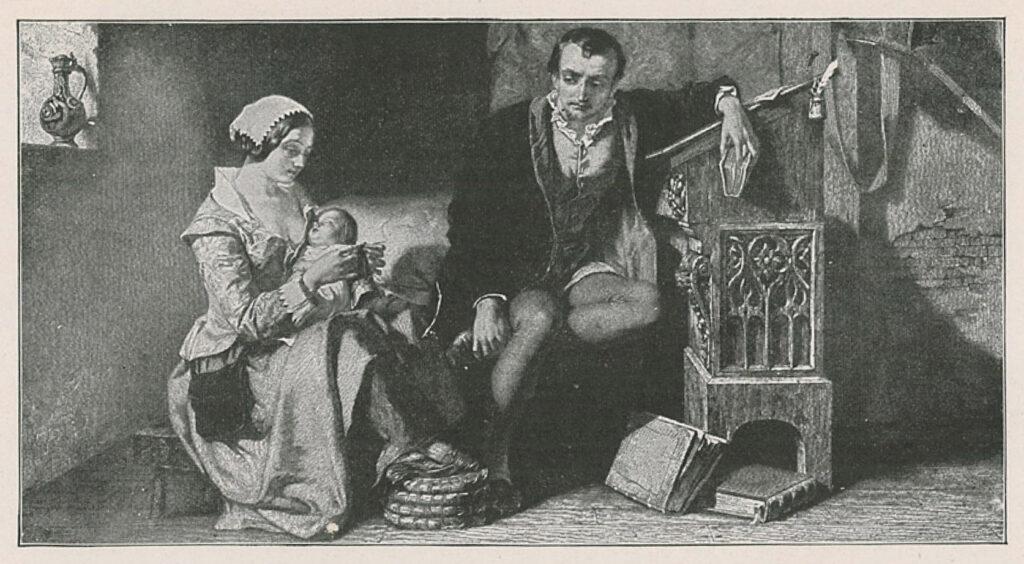
The Rev. Wm. Lee and Family.
From an engraving of the Royal Irish Art Union, published in 1850.
The Story of the Little Red Seal
¶ We, of this day and generation, are accustomed to knit underwear that shows quite as much attention to beauty of fabric, correctness of size, perfection of fit and finish as our outer wear. Were we now forced to use underwear like that worn by our grandparents, with its hand – sewn, scissors – trimmed seams, we would appreciate more fully the great improvements in our present day knit undergarments.
¶ Let us go back a little and consider some of the earlier conditions of manufacture.
The First Knitting Machine
¶ Prior to 1589 all knitting was done by hand. About that time the Rev. Wm. Lee of Woodborough, Nottinghamshire, England, conceived the idea of applying to a machine, in effect, the motions of his wife’s fingers as he watched them dexterously ply her knitting needles.
Necessarily, the first production was a hand- operated machine, crude in construction, but it opened the way to that great flood of knitting. machines now found in Hosiery and Underwear Mills everywhere. Lee’s invention blazed the way for a world-wide industry in which the United. States today easily holds first place.
It is unnecessary here to consider the mechanical details of the clergyman’s machine; suffice it to say that some of the fundamental operations he invented are retained to this day.
Simultaneously with the continuing growth of the knitting industry and the many improvements in knit fabrics, there was a pressing demand for better seams, and the first notable advance in the art was the Willcox & Gibbs’ Seaming and Trimming Machine, first marketed in 1880.
¶ This sewing machine finished circular or cut hosiery and knit underwear in so superior a way as to offer a degree of durability, comfort, improved fit and finish previously unknown, and it at once became popular wherever the knitting industry thrived.
The success of this machine, which trimmed and seamed in one operation, encouraged the engineers of the Willcox & Gibbs Co. to continue their inventive efforts and in 1889 their “Overlock” Seaming Machine was introduced. ¶ The principal feature commending the Overlock seam was the concealment of the neatly trimmed edges beneath a soft overseaming stitch.
¶ The United States Consul at Nottingham, in his report to Washington, stated:
“The Overlock Stitching Device of Willcox & Gibbs has had a phenomenal success since the date of its introduction ….. The keen competition among manufacturers has necessitated its use both as a matter of economy and to improve the character of output for a discriminating market.”
¶ The Overlock machine operated at least one hundred times as fast as handstitching and made a seam that for years held unquestioned precedence. as the strongest, most sightly and most comfortable. seam used on knit underwear. For nearly twenty years the United States Government has specified the Overlock Seam for Army and Navy underwear.
The “Flatlock” Seam
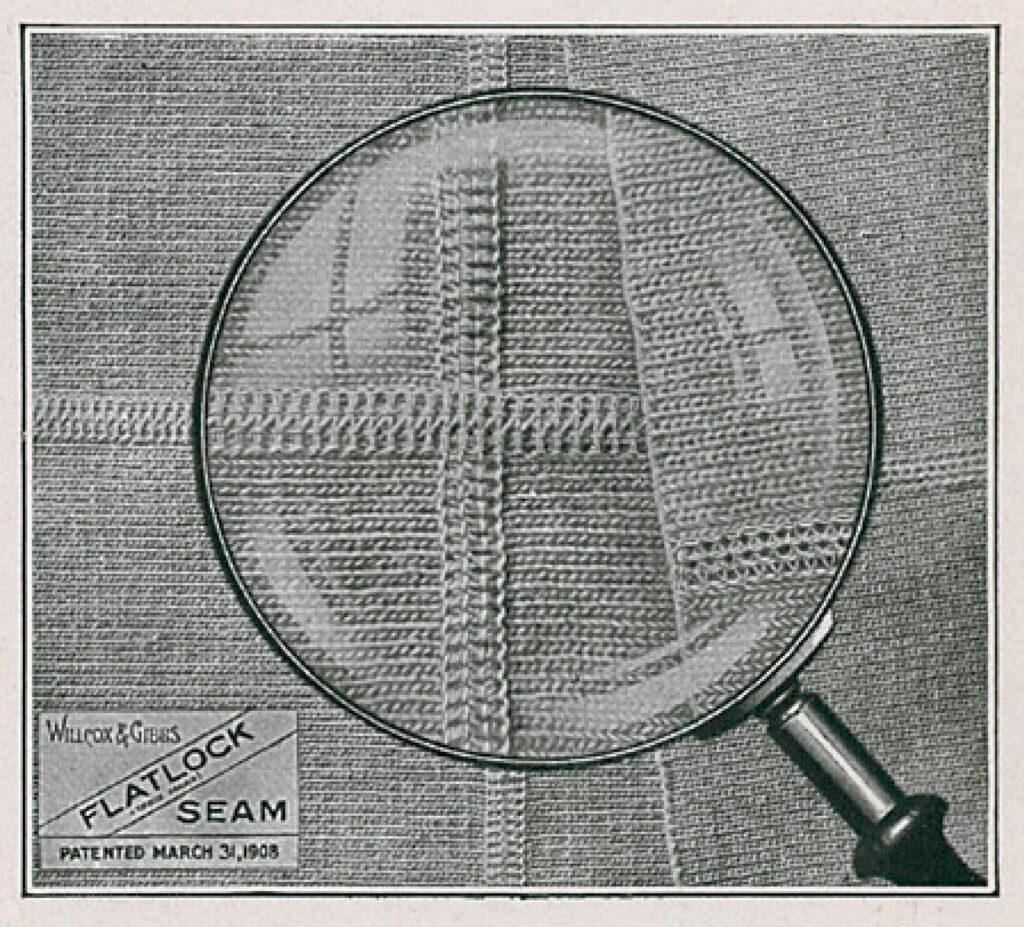
¶ As one step led to another, so the famous. Overlock seam led to the invention of the incomparable “FLATLOCK” Seam. (Patented in the United States and Foreign Countries.)
Most of us have worn underwear with “scratchy” seams, or seams that marked the flesh, and all of us have had undergarments which gave out at the seams.
The Flatlock Seam does away with these sources. of discomfort. It is perfectly flat, and, unlike other seams, it is made up of only a single thickness of the fabric, plus the thread. The side of the seam next the flesh has no ridges or humps.
The Flatlock Seam makes for greater comfort to the wearer, because it is a perfect union of abutted cut edges, so stitched together that the seam presents only one thickness of cloth to the body of the wearer. The seam is perfectly flat and smooth, hence comfortable. It is also very strong.
¶ The machine on which the Flatlock Patented Seam is made is also the invention of the Willcox & Gibbs Sewing Machine Co., and in the short space of time since it was offered to the trade, about 200 Mills in the United States, Great Britain and Canada have adopted it, one U. S. manufacturer of high grade underwear advertising that his annual product of 5 million garments is Flatlock seamed throughout.
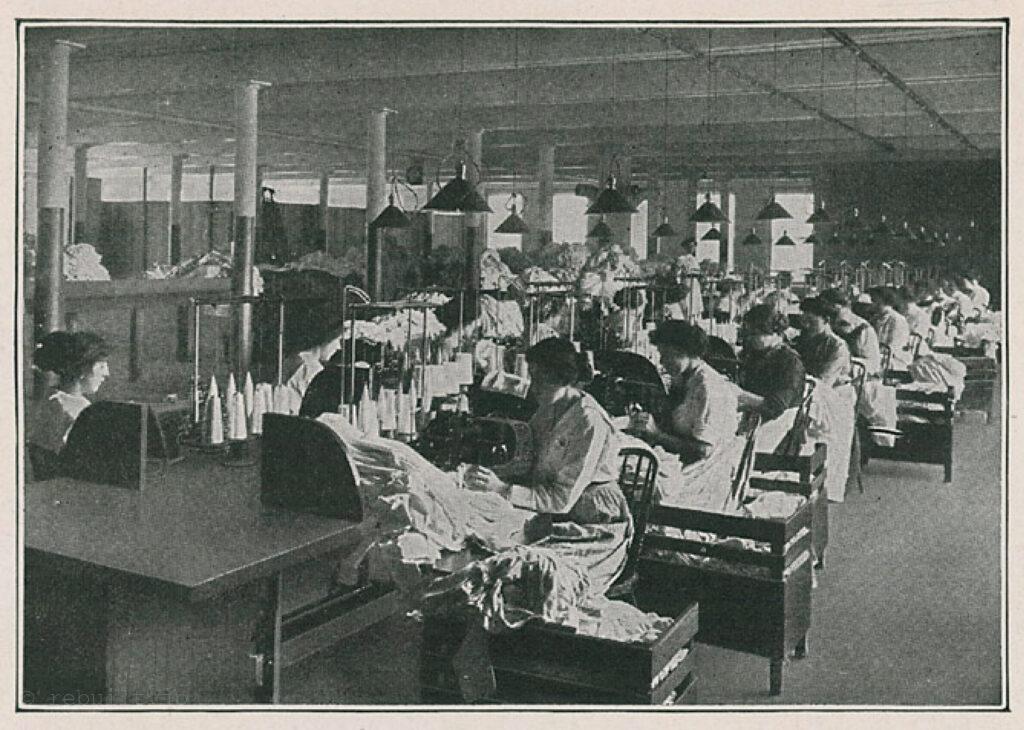
The Pioneer Mill where over 5,000,000 garments are finished every year with “Flatlock” Seams.
Comfort and Service to the Wearer
¶ Study the photograph above and see why underwear with the Flatlock Seam is comfortable. The Flatlock Seam is a skilful interlacing of thread and with the stitches so arranged that any of them may be cut, but the rest of the seam will not rip nor ravel when pulled in either direction. This is why underwear with the Flatlock Seam represents long service. If the seam rips or ravels it is not the Flatlock Seam.
“The Little Red Seal”
¶ But a seam is only a part of a garment and comes in for little notice unless one looks for it.
¶ Hence a means of ready identification of the Flatlock Seam was sought. After considerable thought and experimenting, the identifying mark chosen was. “the Little Red Seal.”
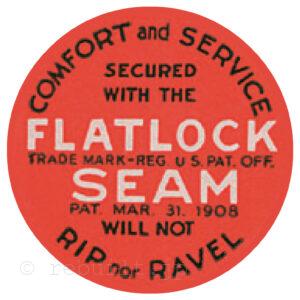
¶ It is to be noted that it has several good points. First, it is bright in color and symmetrical in design so that it is easily seen and quickly recognized by the purchaser. Second, it sums up the advantages of the seam – “Comfort and Service” and “Will not Rip nor Ravel.” Look for it when shopping.
“The Little Red Seal” is offered to manufacturers who may use it on the individual garments or on the boxing. It can also be used on show cards. and price cards.
Wherever “the Little Red Seal” is shown, comfortable, serviceable Flatlock seamed underwear may be bought. And the merchant who sells Flatlock seamed underwear is the merchant who specializes on quality goods for his trade.
Your dealer can supply you with Flatlock seamed underwear. Ask him.
U. S. Government Approval
¶ In March, 1917, the United States Government published specifications for Knit Underwear as follows:
“All seams to be flat and double seamed except where FLATLOCK seam is used. * **
All stitching to be secure and strong, and not to ravel or pull out. (Specifications 55 U1a.)
¶ In Great Britain over 70 manufacturers are finishing knit underwear with the Flatlock Seam for use by the British Army and Navy.
If the Governments of these two great countries, the United States and Great Britain, so thoroughly approve the use of the Flatlock Seam on military underwear, is it not fair to claim that underwear with the Flatlock Seam will prove equally satisfactory to the civilian – to YOU?
The Flatlock Seam makes the garment look well and fit well, and will outwear the fabric.
Secure greater comfort and service by wearing garments made with the Flatlock Patented Seam.
Compare the Flatlock Seam with
the seam of the garment you now wear.
Copyright, 1917 by
Willcox & Gibbs Sewing Machine Co.
Form 236-8-15-17.
℔ 1917年にWillcox & Gibbs Sewing Machine Co. より発刊されたものを当方が文字起こした記事です。オリジナルのコピーを見たい場合はこちらの検索結果より確認ください。また、内容の記載に問題がある場合は問い合わせ先より連絡ください。
